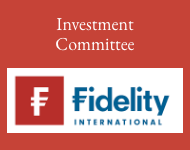Sam McArthur, partner at Praetura Investments explores why now is the time for paraplanners and advisers to encourage investment in VCTs, especially those breaking the mold of what’s usually expected for the tax-efficient schemes.
The latest figures from HMRC reveal that the number of investors claiming VCT tax relief has jumped by over a third[1], driven by the capital gains tax (CGT) annual exempt amount freeze in 2021 and subsequent reductions to the threshold in 2023 and then 2024. The October 2024 budget, when CGT rates were pushed up and unused pension contributions lost their immunity to inheritance tax, has only driven up interest.
With tax efficient modes of investment at the top of the agenda heading into 2025, VCTs provide an enticing solution for advisers. And, in light of higher demand, fund managers are increasingly toying with the prospect of opening new VCTs.
Building a new VCT is a challenging task for many reasons. But for established VCTs, legacy issues are always a risk and over the last few years, the high price of investments has left many, including some of the largest, with serious performance problems. Starting from the introduction of the Risk to Capital condition in 2017/18, which outlawed less risky EIS and VCT strategies, a number of VCT managers pivoted their activities to comply with the new rules. This has created a market dominated by generalists with similar strategies, generating growing competition for the same deals.
What’s more, the rising popularity of VCTs has led to an oversupply of capital, with the last three years generating the top three years for fundraising since the scheme’s inception thirty years ago, totalling just short of £3bn[2].
We launched our own Praetura Growth VCT in early 2024, coinciding with the rising demand and more realistic valuations. With valuations heading back down to much more attractive levels, these circumstances allowed us to create a VCT which is now investing in businesses at valuations that the market likely hasn’t seen for 15 years.
That’s not just based on subjective, internal estimates of what investees are worth. For example, SaaS Capital index is a benchmark that we use regularly when investing in the software-as-a-service sector, which is one of our core focus areas. The index, which uses public company data as a tool to value private SaaS businesses, recorded a median ARR multiple of 7.3x in December 2024. For prospective investors, that compares very favourably to 11.4x in September 2018, 10.2x in November 2019, 16.9x in December 2020, and 16.4x in October 2021.
Since VCT rules dictate deadlines for funds raised to be deployed, there is no option for ceasing to invest over long periods and as this scenario is apparent across a number of VCT sectors, managers with successful fundraises have had no choice but to invest at the top of the market. That sends a message that, in VCTs at least, bigger isn’t necessarily better. It also suggests that the longevity of a VCT doesn’t guarantee the best performance or outcome and that diversification is paramount.
Here, paraplanners and advisers have an important role to play.
The market has been narrowing for more than a decade: In 2020/22 128 VCTs were managing funds, but by 2022/23, that had dropped to just 44[3].
Added to that, lots of VCTs coinvest, so work has to be done to find not just differing strategies and objectives, but sometimes different underlying investees.
The Praetura Growth VCT is a useful addition to the market, for example, as it is not part of the herd of London-centric funds fighting for the same deals, instead identifying overlooked opportunities outside of the M25. A key benefit of the VCT is dominance in deal flow: we manage the British Business Bank’s £100 million Northern Powerhouse Investment Fund II, the company is mandated to invest in seed stage companies, placing us at the beginning of the pipeline for all these businesses.
This institutional mandate allows us to monitor progress and to invest alongside it and in different rounds, including EIS and VCT, as companies build turnover and move further along the growth journey where there is less risk and follow-on funding is particularly well-informed.
While nobody wants bad outcomes, a growing theme of both government and regulators over the last year or more has been to not lose sight of the fact a low-to-no risk appetite has an opportunity cost. With Sarah Pritchard, the FCA’s executive director for markets, recently noting the extent of this harm to both individuals and wider economic growth.
VCTs certainly offer the kind of growth potential many clients need to be looking for if they are to have a chance of meeting their financial objectives. As a result, avoiding the likes of VCT, or smaller and newer VCTs as part of a strategy to attain the best outcomes, perhaps with a suitable portion of the portfolio of a client who understands the risk and has capacity for loss, simply isn’t compliant with the Consumer Duty. And non-compliance with the Duty is unlikely to go down well with the FCA or with those buying up IFA firms in the future.
[1] https://www.gov.uk/government/statistics/venture-capital-trusts-2024/venture-capital-trusts-statistics-2024
[2] 2021/22, 2022/23 & 2023/24: HMRC: https://www.gov.uk/government/statistics/venture-capital-trusts-2024/venture-capital-trusts-statistics-2024 & Wealth Club: https://www.wealthclub.co.uk/news-and-insights/vct-fundraising-2023-24/
[3] https://www.gov.uk/government/statistics/venture-capital-trusts-2024/venture-capital-trusts-statistics-2024
Main image: scott-webb-qauaqihMwpc-unsplash































